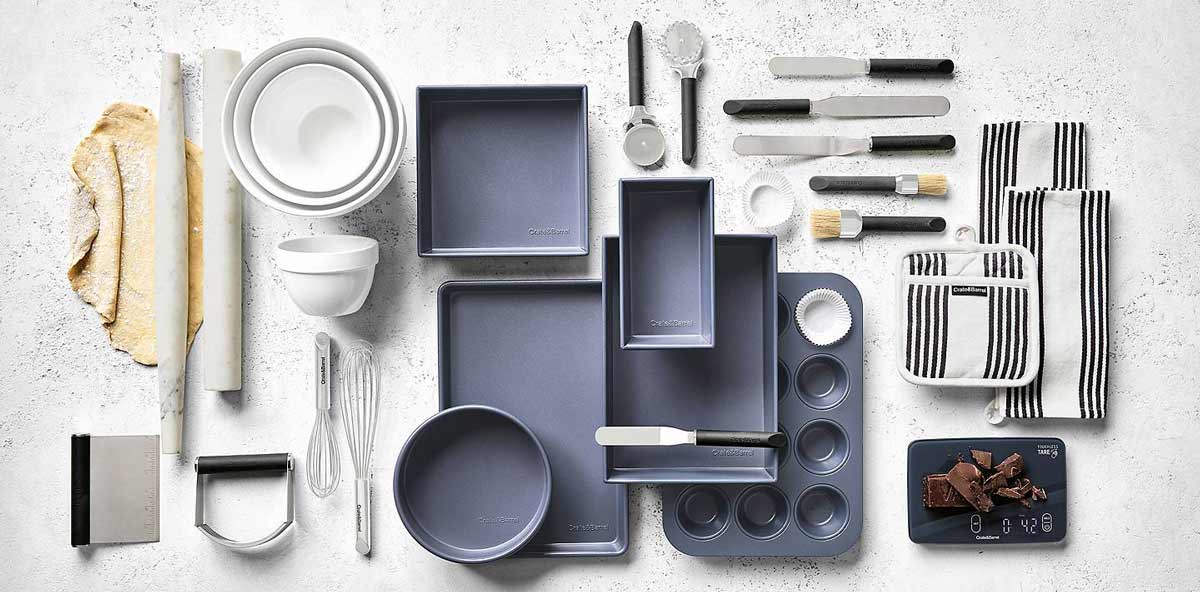Introduction: Why Kitchen Tools Matter
When it comes to cooking, the right kitchen tools can mean the difference between a frustrating, time-consuming chore and an enjoyable, effortless experience. Whether you’re a beginner just starting your culinary journey or a seasoned home chef looking to upgrade, having the essential tools tailored to your needs is crucial. The kitchen is your workspace, and investing in quality tools can elevate your cooking, improve precision, and even inspire creativity.
In this comprehensive guide, we dive deep into the world of kitchen tools — from the foundational basics like knives and cutting boards to indispensable cookware and mixing essentials. We’ll break down the must-haves, share pro tips on usage and maintenance, and even provide practical price ranges so you can budget your upgrades wisely.
Cutting and Chopping Tools: The Heart of Every Kitchen
Chef’s Knives — The Ultimate Kitchen Companion
The chef’s knife is arguably the most important tool in your kitchen. A versatile, sharp blade lets you chop, slice, dice, and mince with precision and ease. When selecting a chef’s knife, consider the blade length (typically 6 to 12 inches), the handle comfort, and the balance between blade and handle.
Top Picks: Wüsthof, Victorinox, Global, Shun
Pro Tip: Keep your knife sharp using a whetstone or a quality sharpener to maintain clean cuts and prevent accidents.
Paring and Serrated Knives — Specialty Blades for Specific Tasks
While the chef’s knife is your all-rounder, a paring knife is perfect for peeling and intricate work. A serrated knife excels at slicing bread, tomatoes, and other soft or crusty foods.
Cutting Boards: Wood, Plastic, or Bamboo?
Choosing the right cutting board can affect both your food prep and knife longevity. Wood boards are durable and gentle on knives but require regular oiling to prevent cracking. Plastic boards are dishwasher-safe and good for raw meat to avoid cross-contamination. Bamboo boards are eco-friendly but harder and may dull knives faster.
Specialty Cutting Tools: Mandoline Slicers, Peelers, and Shears
For those who love precision and speed, tools like mandoline slicers offer uniform thin cuts for vegetables. A sharp vegetable peeler saves time peeling carrots, potatoes, and apples. And never underestimate the utility of kitchen shears — from cutting herbs to trimming meat.
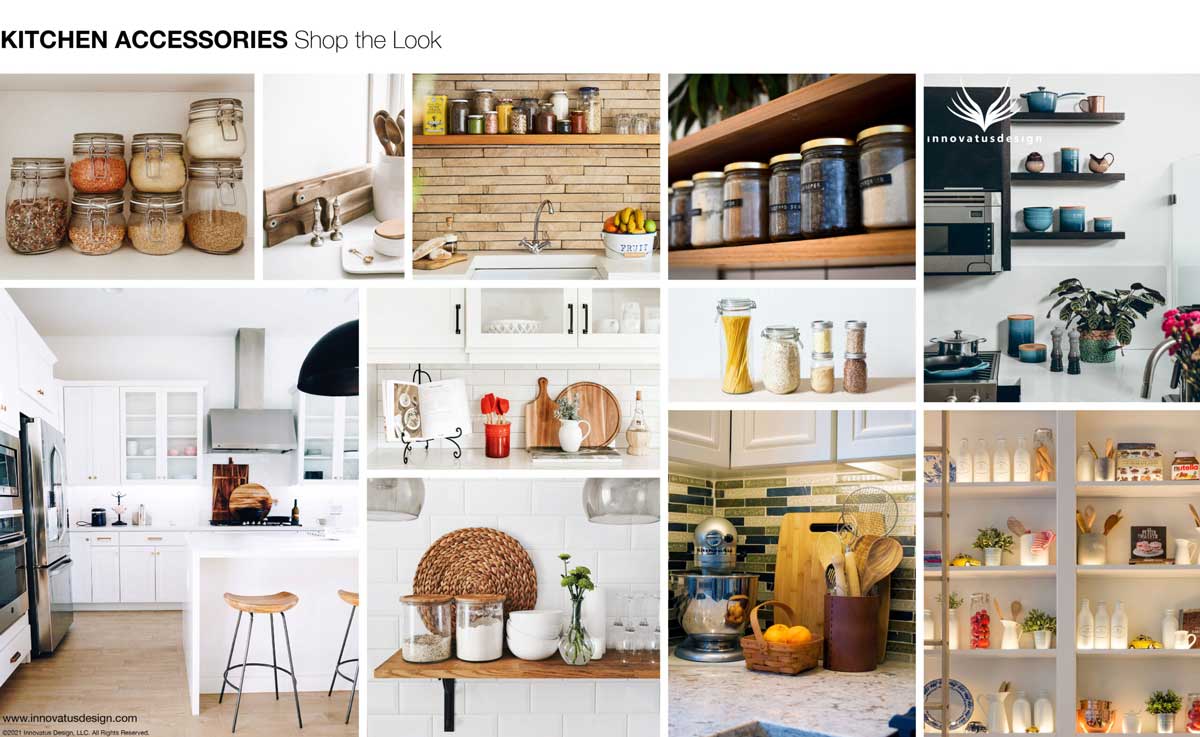
Essential Kitchen Tools: Must-Haves for Every Home Chef
Measuring and Mixing Tools: Precision is Key
Measuring Cups and Spoons
Accurate measuring is fundamental to successful cooking and baking. Invest in a good set of measuring cups (for dry and liquid ingredients) and measuring spoons. Stainless steel sets tend to be the most durable and precise.
Mixing Bowls: Materials and Uses
From tossing salads to mixing dough, quality mixing bowls are essential. Stainless steel bowls are lightweight and durable, glass bowls are microwave-safe and versatile, while ceramic bowls offer style but require more care.
Whisks, Spatulas, and Spoons
Each mixing tool serves a unique purpose: a whisk for aerating eggs and sauces, a spatula for scraping and folding, and wooden or silicone mixing spoons for stirring without scratching cookware.
Cookware Essentials: The Foundation of Cooking
Types of Pots and Pans
Your cookware arsenal should include a few basics:
-
Stainless Steel Pans: Durable, great for searing and browning.
-
Non-Stick Pans: Ideal for eggs, pancakes, and sticky foods.
-
Cast Iron Skillets: Excellent heat retention and even cooking; requires seasoning.
Lids, Steamers, and Other Cookware Accessories
A good set of lids enhances cooking efficiency by trapping heat and moisture. Steaming baskets allow healthy cooking of vegetables. Investing in quality cookware accessories expands your kitchen capabilities.
Cookware Maintenance Tips
Proper cleaning and maintenance prolong cookware life. Avoid metal utensils on non-stick pans, dry cast iron thoroughly to prevent rust, and polish stainless steel occasionally.
Essential Tools Price Table
| Tool | Average Cost (USD) | Recommended Brands | Usage Tips |
|---|---|---|---|
| Chef’s Knife | $30 – $200 | Wüsthof, Victorinox | Keep sharp, use proper cutting board |
| Measuring Cups | $10 – $30 | OXO, Pyrex | Use for dry and liquid ingredients |
| Cast Iron Skillet | $25 – $100 | Lodge, Le Creuset | Season regularly for best results |
| Mandoline Slicer | $20 – $60 | OXO, Benriner | Use safety guard to prevent cuts |
| Mixing Bowls | $15 – $50 | Pyrex, Cuisinart | Nest for storage |
CTA — Upgrade Your Kitchen Foundation
Ready to transform your kitchen? Browse our handpicked collection of essential kitchen tools, expertly selected to elevate your cooking experience. Whether you’re stocking a new kitchen or upgrading, find exclusive deals here.
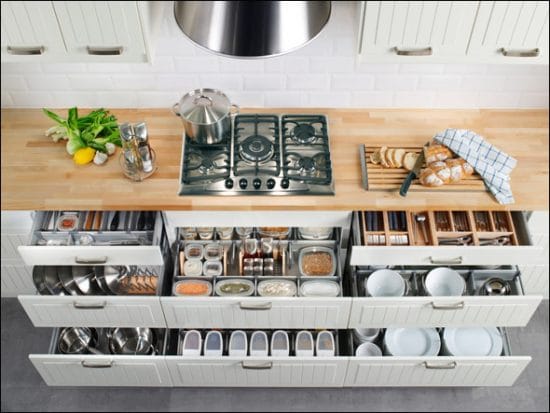
High-Performance Kitchen Tools That Are Worth Every Penny
FAQ
Q: Which knife is best for beginners?
A: A 8-inch chef’s knife with a comfortable grip and balanced weight is ideal for most beginners.
Q: How do I maintain wooden cutting boards?
A: Regularly oil your wooden boards with food-safe mineral oil and avoid soaking them in water.
Q: What’s the difference between stainless steel and cast iron cookware?
A: Stainless steel is lightweight, non-reactive, and good for quick cooking; cast iron retains heat well and is great for slow cooking but requires seasoning.
Advanced Kitchen Tools: Elevate Your Cooking Game
Blenders and Food Processors: Versatility in Action
A blender is indispensable for smoothies, soups, sauces, and even doughs. When choosing a blender, consider motor power (measured in watts), blade quality, capacity, and additional features like pulse or preset modes.
Food processors, on the other hand, excel at chopping, slicing, shredding, and kneading. They save precious time and effort, especially for batch prep.
Top Blender and Food Processor Brands
| Brand | Typical Price Range | Key Features | Best For |
|---|---|---|---|
| Vitamix | $300 – $700 | Powerful motor, durable blades | Smoothies, soups, nut butters |
| Ninja | $100 – $250 | Affordable, multi-function | Everyday blending |
| Cuisinart | $150 – $400 | Multiple attachments | Food prep and dough kneading |
| KitchenAid | $200 – $500 | High quality, versatile | All-around food processing |
Mixers: From Handheld to Stand Mixers
A hand mixer is perfect for quick mixing tasks — whipping cream, beating eggs, or folding batter. For more serious bakers, a stand mixer is a game-changer, handling heavy doughs, large batches, and attachments like pasta makers or meat grinders.
Baking Tools: Precision and Consistency
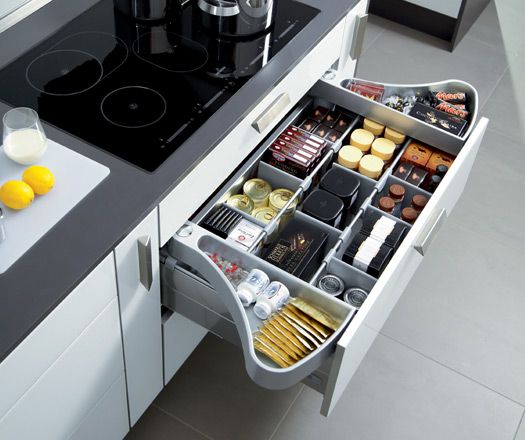
Essential Kitchen Tools: Must-Haves for Every Home Chef
Measuring Scales: Digital vs. Mechanical
Accurate measurement in baking is crucial. A digital scale offers precision down to grams and ounces, making recipes reproducible and consistent.
Baking Mats and Parchment Paper
Reusable silicone baking mats are eco-friendly alternatives to parchment, providing non-stick surfaces for cookies, pastries, and roasting.
Specialty Baking Tools
-
Rolling Pins: Wooden, silicone, or adjustable thickness pins help shape dough evenly.
-
Pastry Brushes: Essential for applying glazes, egg washes, or butter.
-
Cooling Racks: Allow air circulation to cool baked goods evenly.
Smart Kitchen Gadgets: Innovation Meets Convenience
Smart Thermometers
Precision cooking is elevated with smart thermometers that sync with your phone, sending alerts when your meat reaches the perfect temperature.
Wi-Fi Enabled Multi-Cookers
Devices like the Instant Pot have transformed kitchen efficiency. Many now come with app control, recipes, and voice assistant integration.
Automated Coffee Makers
Start your day right with a smart coffee maker programmed to brew coffee at a set time, adjustable grind sizes, and drink preferences.
Specialty Tools for Niche Cooking
Sushi Making Kits
For sushi enthusiasts, kits including bamboo mats, rice paddles, and molds enable restaurant-quality sushi at home.
Ethnic Cooking Tools
-
Tandoor Ovens for Indian cuisine
-
Tagines for Moroccan dishes
-
Woks for Asian stir-frying
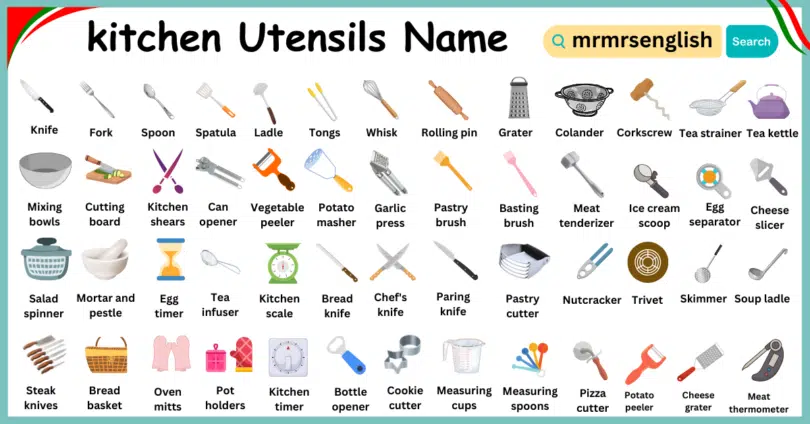
Essential Kitchen Tools: Must-Haves for Every Home Chef
Organizing Your Tools: Storage Solutions
Proper storage not only protects your tools but enhances kitchen workflow.
Drawer Organizers and Knife Blocks
Invest in drawer inserts to separate utensils and keep knives in blocks or magnetic strips for safety and convenience.
Hanging Racks and Shelves
Maximize space by hanging frequently used tools, pots, and pans within easy reach.
Price Table for Advanced Tools
| Tool | Average Cost (USD) | Recommended Brands | Key Features |
|---|---|---|---|
| Blender | $100 – $700 | Vitamix, Ninja | Motor power, capacity, presets |
| Food Processor | $150 – $500 | Cuisinart, KitchenAid | Attachments, capacity |
| Stand Mixer | $150 – $600 | KitchenAid, Kenwood | Motor strength, versatility |
| Smart Thermometer | $50 – $150 | Meater, ThermoWorks | Wireless, app integration |
| Wi-Fi Multi-Cooker | $100 – $250 | Instant Pot, Ninja | Pressure cooking, smart control |
CTA — Upgrade to Smart and Advanced Tools
Discover the latest and most innovative kitchen tools to elevate your cooking. Shop our curated collection of blenders, mixers, smart appliances, and more to turn your kitchen into a culinary powerhouse.
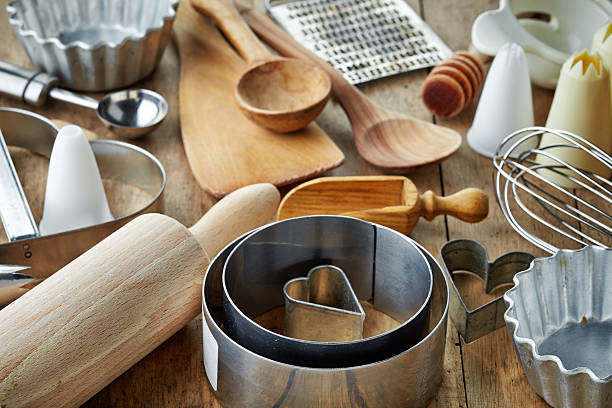
various kitchen utensils on wooden table
Basic Cutting Tools: The Heart of Every Kitchen
Chef’s Knife
A good chef’s knife is the most important tool in any kitchen. It’s versatile for chopping, slicing, dicing, and mincing a wide variety of ingredients. Choose a blade length between 8 and 10 inches for optimal control and comfort.
Key Features:
-
Sharp, durable blade (stainless steel or high-carbon steel)
-
Comfortable, non-slip handle
-
Balanced weight for ease of use
Paring Knife
Small but mighty, a paring knife excels in peeling, trimming, and precision tasks such as deveining shrimp or coring fruits. It typically measures 3 to 4 inches in blade length.
Utility Knife
Between a chef’s knife and a paring knife, the utility knife handles tasks like cutting sandwiches or slicing medium-sized fruits. It’s a handy addition to your cutting arsenal.
Knife Maintenance
Keep knives sharp using a whetstone or honing rod. Proper storage in a knife block or magnetic strip prevents damage and enhances safety.
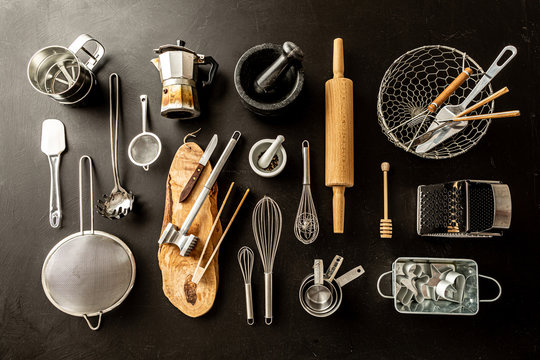
High-Performance Kitchen Tools That Are Worth Every Penny
Cutting Boards: Protect Your Knives and Surfaces
Material Options
-
Wood: Gentle on knives, naturally antibacterial, ideal for vegetables and bread.
-
Plastic: Dishwasher-safe, good for meats to avoid cross-contamination.
-
Bamboo: Sustainable alternative with good durability.
Recommended Sizes
A variety of sizes (small for fruits, large for meats) will give you flexibility. Having color-coded boards can help avoid food safety risks.
| Cutting Board Type | Pros | Cons | Price Range (USD) |
|---|---|---|---|
| Wood | Durable, knife-friendly | Requires maintenance | $20 – $70 |
| Plastic | Easy to clean | Can scar and retain odors | $10 – $30 |
| Bamboo | Eco-friendly | Harder surface | $15 – $50 |
Measuring Tools: Precision in Cooking and Baking
Measuring Cups and Spoons
Accuracy is key in baking and cooking, making measuring cups (liquid and dry) and spoons essential. Stainless steel or durable plastic sets are most common.
Digital Kitchen Scale
For precision beyond volume, a digital scale measures ingredients by weight, ensuring consistent results every time.
Mixing and Prep Tools
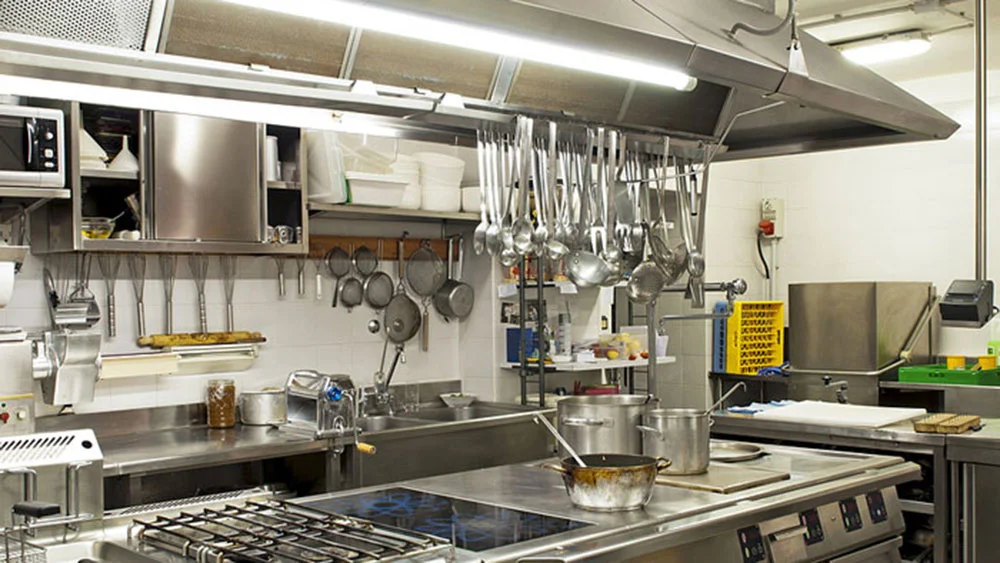
Essential Kitchen Tools: Must-Haves for Every Home Chef
Mixing Bowls
Available in stainless steel, glass, or plastic, mixing bowls are essential for combining ingredients. Choose a nested set with multiple sizes for versatility.
Whisks and Spatulas
-
Whisks: Ideal for beating eggs, blending sauces, and incorporating air.
-
Spatulas: Silicone spatulas are heat-resistant and perfect for scraping bowls or folding batter.
Peelers and Graters
A good peeler makes prepping fruits and vegetables quick and safe. Graters add texture with fine zest, shredded cheese, or vegetable ribbons.
Cookware Essentials: Pots, Pans, and Bakeware
Saucepans and Skillets
-
Saucepans: Perfect for boiling, simmering, and making sauces.
-
Skillets/Frying Pans: Non-stick or cast iron options for sautéing, frying, and searing.
Baking Sheets and Casserole Dishes
Baking sheets are multi-purpose, ideal for roasting and baking. Casserole dishes (glass or ceramic) are perfect for oven-baked meals.
| Cookware Type | Typical Uses | Material Options | Price Range (USD) |
|---|---|---|---|
| Saucepan | Sauces, boiling, reheating | Stainless steel, non-stick | $30 – $150 |
| Skillet | Frying, sautéing, searing | Cast iron, non-stick | $20 – $200 |
| Baking Sheet | Roasting, baking | Aluminum, stainless steel | $15 – $50 |
| Casserole Dish | Baking, serving | Glass, ceramic | $20 – $80 |
Small Appliances to Simplify Your Kitchen Work
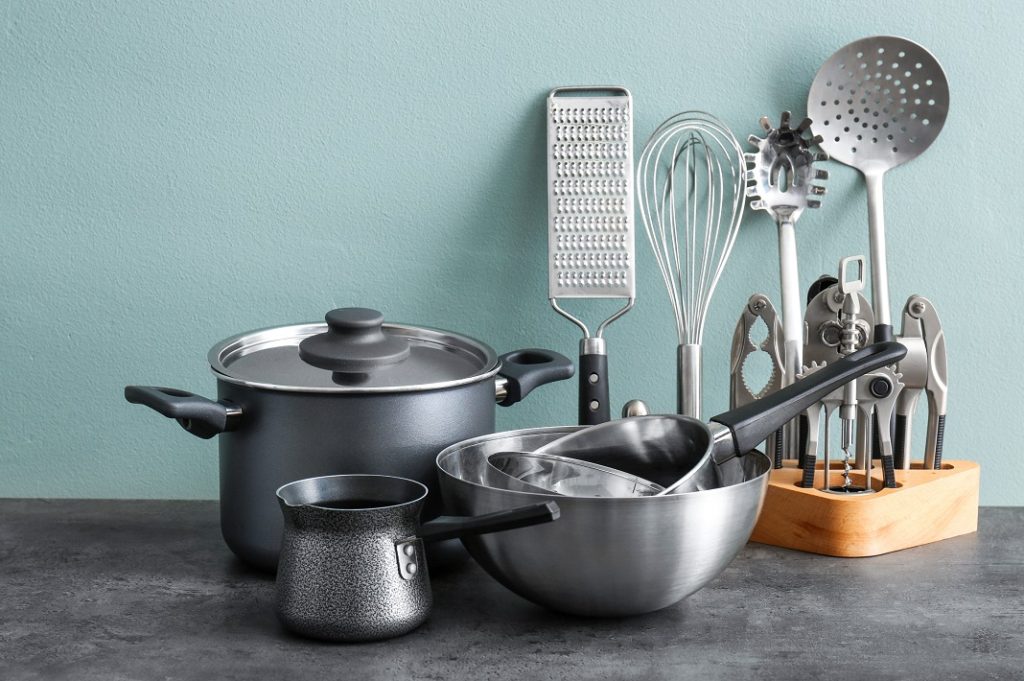
Essential Kitchen Tools: Must-Haves for Every Home Chef
Blender and Food Processor
Blenders excel in smoothies and purees, while food processors chop, shred, and slice large quantities quickly.
Mixer
Whether hand-held or stand mixer, this tool is indispensable for baking, making doughs, or whipping creams.
Coffee Maker and Toaster
A quality coffee maker and toaster round out your kitchen for breakfast preparation.
Specialty Tools for Enthusiast Cooks
Mandoline Slicer
Perfect for uniform vegetable slices quickly, great for salads, chips, and gratins.
Immersion Blender
Handheld and easy to use directly in pots or bowls for pureeing soups or emulsifying sauces.
Kitchen Thermometer
Ensures meats and baked goods reach safe internal temperatures.
Mastering your kitchen tools means selecting essentials that fit your cooking style, maintaining them properly, and organizing your space for efficiency. Whether you’re chopping veggies or baking a cake, the right tools empower you to create with confidence.
Eco-Friendly Kitchen Tools: Sustainable Choices for a Greener Home
Why Choose Eco-Friendly Tools?
The modern kitchen isn’t just about convenience — it’s about responsibility. Eco-friendly kitchen tools help reduce waste, conserve resources, and minimize harmful environmental impacts. From biodegradable materials to tools made from recycled or renewable sources, these options contribute to a healthier planet.
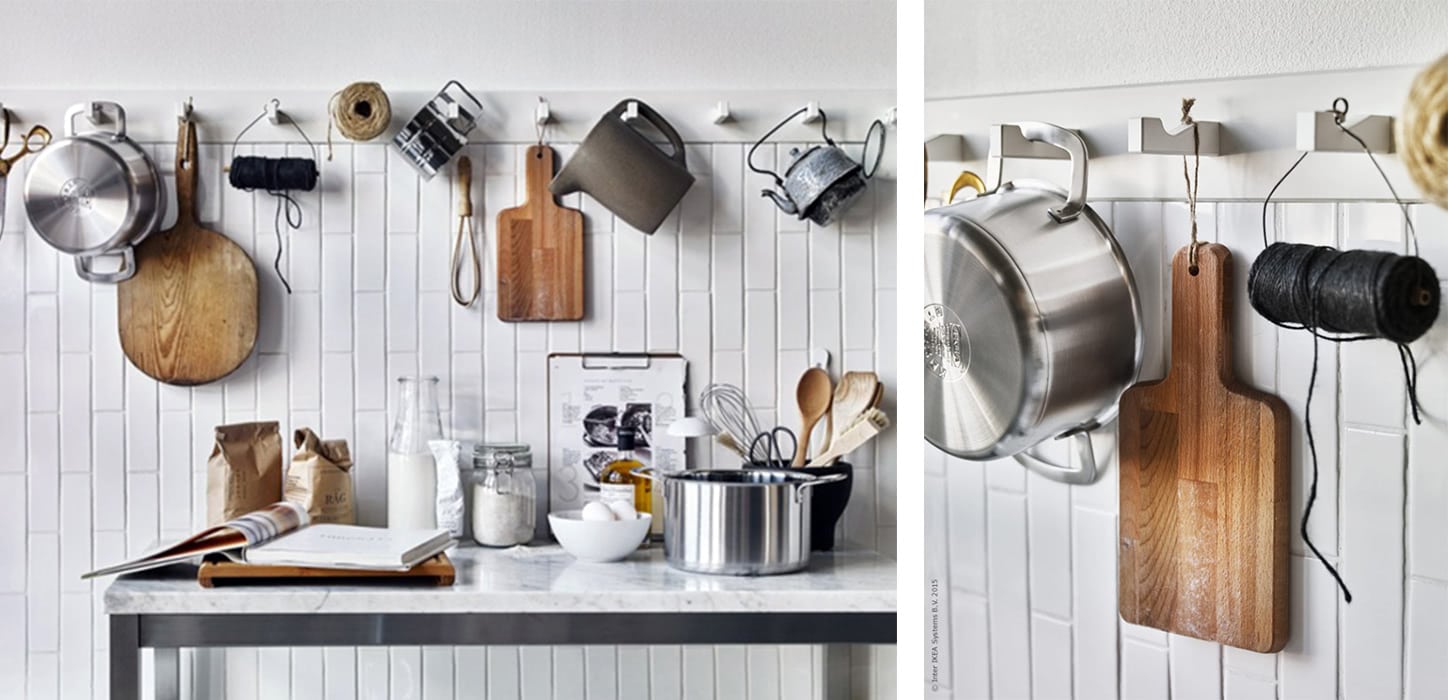
Essential Kitchen Tools: Must-Haves for Every Home Chef
Popular Eco-Friendly Materials
-
Bamboo: Naturally renewable and biodegradable, bamboo is great for utensils, cutting boards, and storage containers.
-
Silicone: Durable and reusable, silicone baking mats replace disposable parchment paper.
-
Recycled Stainless Steel: Many premium knives and cookware use recycled metals, reducing mining impacts.
-
Glass and Ceramic: Non-toxic and recyclable alternatives to plastics in containers and cookware.
Top Eco-Friendly Kitchen Tools to Consider
| Tool | Material | Benefits | Price Range (USD) |
|---|---|---|---|
| Bamboo Cutting Boards | Bamboo | Renewable, antimicrobial | $15 – $50 |
| Silicone Baking Mats | Silicone | Reusable, non-stick | $10 – $30 |
| Glass Storage Containers | Glass with lids | Non-toxic, recyclable | $20 – $60 |
| Compost Bin | Biodegradable/Plastic | Reduces food waste | $20 – $50 |
Practical Tips for a Sustainable Kitchen
-
Opt for refillable or bulk spice containers to reduce packaging waste.
-
Choose kitchen towels and napkins made from organic cotton or bamboo instead of paper.
-
Avoid single-use plastics by switching to reusable silicone bags and beeswax wraps.
Organizing and Storing Kitchen Tools Efficiently
Decluttering Your Kitchen: Why It Matters
A cluttered kitchen slows you down. Proper organization improves efficiency, reduces stress, and helps you keep your tools in great shape.
Drawer and Cabinet Organization Ideas
-
Use tiered racks for spices and small jars.
-
Install pull-out shelves for pots and pans.
-
Employ vertical dividers for baking sheets and cutting boards.
-
Use magnetic strips for knives and metal tools.
Creative Storage Hacks
-
Hang utensils on pegboards for easy access.
-
Use stackable clear containers to store tools and ingredients, maximizing vertical space.
-
Repurpose old jars for storing small items like toothpicks or measuring spoons.

Essential Kitchen Tools: Must-Haves for Every Home Chef
Cleaning and Maintaining Your Kitchen Tools
Proper Cleaning Tips for Different Materials
-
Wooden Tools: Hand wash with mild soap, avoid soaking; dry immediately to prevent warping.
-
Stainless Steel: Use non-abrasive cleaners to maintain shine and avoid rust.
-
Silicone and Plastic: Dishwasher-safe, but hand wash recommended for longevity.
-
Electronics: Follow manufacturer instructions; avoid water contact with electrical parts.
Regular Maintenance for Longevity
-
Sharpen knives every few months to keep cutting performance optimal.
-
Oil wooden cutting boards regularly with food-grade mineral oil to prevent cracking.
-
Check appliances for worn cords or loose parts to ensure safety.
Budgeting for Kitchen Tools: Getting the Most Value
How Much Should You Spend?
Investing wisely in kitchen tools is crucial. You don’t need to break the bank to build a well-equipped kitchen, but prioritize quality for frequently used items like knives and pans.
Budget Breakdown Example
| Category | Budget Range (USD) | Notes |
|---|---|---|
| Essential Utensils | $50 – $150 | Knives, spatulas, peelers |
| Cookware | $150 – $400 | Pots, pans, baking sheets |
| Small Appliances | $100 – $500 | Blender, mixer, coffee maker |
| Specialty Tools | $50 – $200 | Mandoline, zester, pizza stone |
Cost-Saving Tips
-
Buy quality basics first; add specialty tools as needed.
-
Look for combo sets or multi-functional tools to reduce cost and clutter.
-
Shop off-season sales or reputable discount retailers.
Case Studies: How Well-Equipped Kitchens Improve Cooking Experience

Young couple cooking in the kitchen.
Case Study 1: The Busy Family Kitchen
The Smith family upgraded their kitchen with a food processor, multi-cooker, and smart coffee maker. Meal prep time decreased by 30%, and family meals became easier and healthier.
Case Study 2: The Aspiring Baker
Jessica invested in a stand mixer, digital scale, and silicone baking mats. Her baking quality improved, and she reported increased confidence and creativity in her kitchen.
Case Study 3: The Eco-Conscious Cook
Mark switched to bamboo utensils, glass storage, and reusable silicone bags. He reduced kitchen waste by 40% and enjoys a cleaner, more sustainable cooking space.
Practical Tips to Maximize Your Kitchen Tools’ Use
-
Label storage containers and tools for quick identification.
-
Rotate tools and appliances regularly to avoid underuse.
-
Keep a small maintenance kit handy (sharpeners, cleaning brushes, oils).
Call to Action
Ready to upgrade your kitchen sustainably and efficiently? Explore our curated selection of eco-friendly tools, smart appliances, and organizing solutions to transform your cooking experience.
Frequently Asked Questions About Kitchen Tools
Which kitchen tools are essential for beginners?
For beginners, start with a good chef’s knife, cutting board, measuring cups/spoons, mixing bowls, a saucepan, and a skillet. These basics cover most everyday cooking needs.
Where can I buy quality kitchen tools on a budget?
Reliable options include department stores like Target or Walmart, online retailers such as Amazon, and discount stores like TJ Maxx or outlet stores. Look for reviews and consider starter sets.
Who should invest in specialty kitchen gadgets?
If you love cooking or baking frequently, specialty tools like mandoline slicers, stand mixers, or immersion blenders can enhance efficiency and creativity. Professionals and serious home chefs benefit most.
When is the best time to buy kitchen tools?
Major sales events such as Black Friday, Cyber Monday, and holiday sales are ideal times. Also consider end-of-season clearances and clearance sections online.
How do I care for my kitchen tools to extend their lifespan?
Hand wash knives and wooden cutting boards, dry them thoroughly, and store knives in blocks or magnetic strips. For non-stick cookware, avoid metal utensils and use gentle cleaning tools.
What are the top safety tips when using kitchen tools?
Keep knives sharp and cut away from your body, use stable cutting boards, unplug small appliances when not in use, and never leave cookware unattended on the stove.
Cost Breakdown: Investing Wisely in Kitchen Tools
Investing in kitchen tools ranges widely depending on brand, quality, and type. Here’s an estimated cost overview for building a solid kitchen toolkit:
| Tool Type | Budget Range (USD) | Mid-Range (USD) | High-End (USD) |
|---|---|---|---|
| Chef’s Knife | $20 – $50 | $70 – $150 | $200+ |
| Cutting Boards | $10 – $30 | $40 – $70 | $100+ |
| Measuring Tools | $10 – $25 | $30 – $60 | $70+ |
| Cookware (Set) | $50 – $150 | $200 – $500 | $600+ |
| Small Appliances | $30 – $100 | $120 – $300 | $400+ |
| Specialty Tools | $20 – $80 | $90 – $200 | $250+ |
Buying Guide: How to Choose the Best Kitchen Tools
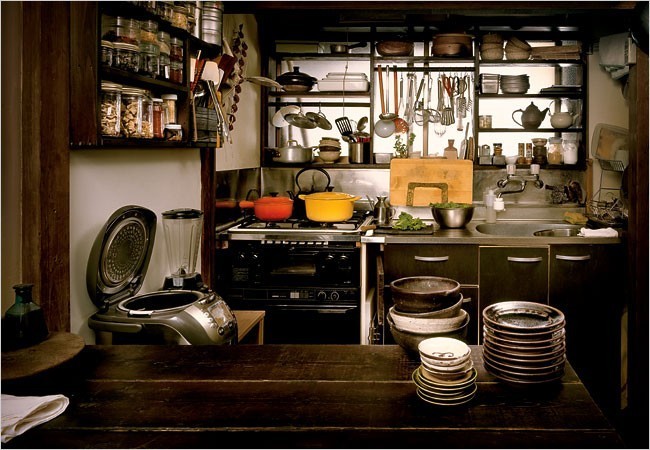
japanese-interior kitchen 2025
Prioritize Function and Quality
Invest first in versatile, durable tools like chef’s knives and quality cookware that last years. Avoid buying single-use gadgets that clutter your kitchen.
Consider Your Cooking Style
If you bake often, prioritize mixers, measuring sets, and baking pans. For stir-fry lovers, invest in good woks and spatulas.
Ergonomics and Comfort Matter
Choose tools that feel comfortable in your hand and have balanced weight. This prevents fatigue and injury.
Material Matters
Stainless steel is durable and rust-resistant. Wood and bamboo are knife-friendly but need maintenance. Non-stick cookware requires gentle care but simplifies cleanup.
Care and Maintenance Tips
-
Sharpen knives regularly to maintain cutting efficiency.
-
Clean cutting boards thoroughly, alternating wood and plastic for hygiene.
-
Season cast iron cookware to maintain its non-stick surface.
-
Avoid soaking wooden utensils; dry immediately after washing.
-
Store appliances in dry, clean places to prevent damage.
Case Studies: How Kitchen Tools Improved Home Cooking
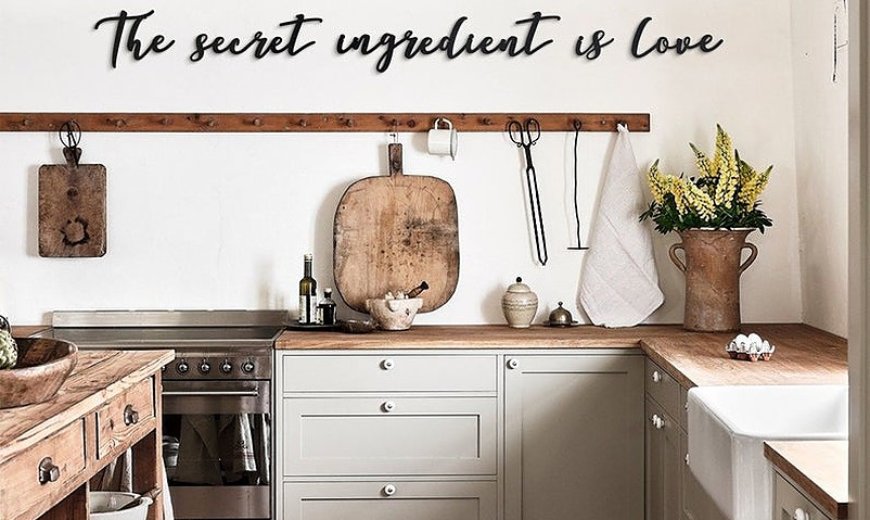
Black-metal-statement-wall-decal-in-white-kitchen-wall
Case Study 1: Sarah’s Small Kitchen Makeover
Sarah upgraded her kitchen tools starting with a chef’s knife and mixing bowl set. She reported cooking became faster, more enjoyable, and less stressful.
Case Study 2: Tom’s Baking Transformation
After investing in a stand mixer and accurate measuring tools, Tom’s bread and pastries improved dramatically, impressing family and friends.
Conclusion: Equip Your Kitchen for Success
Having the right kitchen tools is key to creating delicious meals with ease and confidence. Whether you’re a beginner or seasoned chef, investing in quality essentials and maintaining them properly will transform your cooking experience.
Bonus: Insider Tips & Hacks for Mastering Your Kitchen Tools
1. Extend Your Knife’s Lifespan With These Simple Tricks
-
Always use a wooden or plastic cutting board to prevent dulling.
-
Hone your knife weekly with a honing rod to maintain the edge.
-
Store knives safely in a block or magnetic strip—not loose in a drawer.
2. Multipurpose Tools to Save Space and Money
-
A chef’s knife can double as a slicer, dicer, and mincer.
-
Mixing bowls with lids serve for prep, storage, and even marinating.
-
Silicone spatulas work for stirring, folding, scraping, and even baking.
3. DIY Tool Maintenance at Home
-
Remove rust from cast iron with coarse salt and a scrub brush, then re-season.
-
Clean blender blades by blending warm water and dish soap for 30 seconds.
-
Revive sticky drawer slides with a small amount of paraffin wax or candle.
4. Small Appliance Hacks
-
Use a food processor to make quick dough, chop veggies, and puree soups.
-
A slow cooker isn’t just for stews; try desserts and breakfast casseroles.
-
Keep your coffee grinder sharp and clean for optimal flavor in every cup.
5. Eco-Friendly Kitchen Tool Choices
-
Opt for bamboo cutting boards and utensils as sustainable, renewable options.
-
Reuse glass jars as measuring cups or storage containers.
-
Choose silicone lids and wraps over plastic to reduce waste.
6. What to Do When a Tool Breaks?
-
Check manufacturer warranty for repair or replacement options.
-
For minor damages, many tools can be repaired at home with simple kits (e.g., knife sharpening stones, handle glue).
-
Consider donating or recycling old tools instead of throwing them away.
7. Save Time With Smart Tool Organization
-
Use drawer dividers or utensil trays to keep tools accessible and neat.
-
Hang frequently used tools on wall racks or magnetic strips.
-
Group tools by function: baking, prep, cooking, cleanup.
8. Upgrade Over Time
Start with basics and add specialty tools as your cooking skills grow and needs evolve. This prevents clutter and maximizes your investment.
Unlock your full kitchen potential by mastering these tips, and transform everyday cooking into an effortless joy!


